Introduction, Test System Configuration & Testing Method
If there's something I'm a fan of, it's multi-GPU setups. From the very first time I could run video cards in tandem with 3DFX and its SLI technology, I've always strived for what Agent Smith in The Matrix Reloaded said when he was fighting Neo; "more... more, more more".
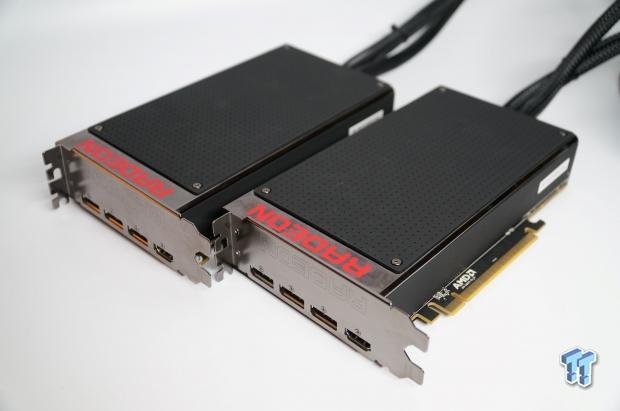
It was only a week or so ago that AMD released its new Radeon R9 Fury X video card that features the super-fast High Bandwidth Memory. While we were fairly impressed with the card, the huge cooler and lack of performance that I thought HBM would deliver, the card fell short of greatness. But it looks like the Fury X is a much better card when thrown into a multi-GPU situation than it is on its own.
Installation of a second Fury X onto my test bed was a hassle, because I needed to find a place to just lay the radiator down. Thankfully, I do have a test bed and not a desktop PC sitting in a chassis, as I would have to make room inside for the second radiator to be mounted. This is a problem I have with Fury X being a great multi-GPU solution, is that you literally need the physical space to be able to mount its required water cooling unit.
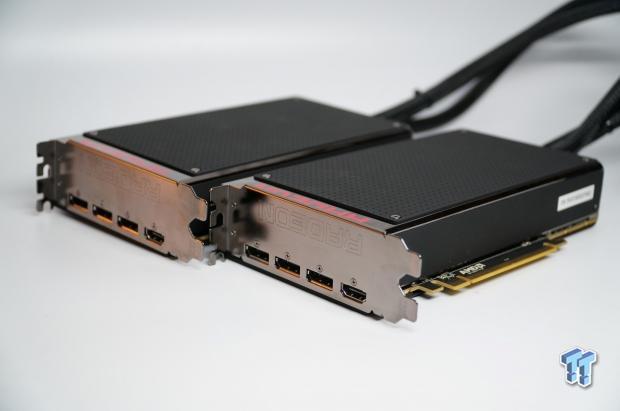
So while the card itself may be shorter thanks to AMD using High Bandwidth Memory, saving precious space on the PCB, that space saving goes to waste - and in the other direction, requiring a big spot for the second radiator. But for some, the big boost in performance from the two Fury X cards in CrossFire could be worth the space used by the two radiators.
Test System Configuration
We only recently built our new X99-powered system, something you can read about here. As for the detailed specifications, this is what we're running:
- CPU: Intel Core i7 5820K processor w/Corsair H110 cooler
- Motherboard: GIGABYTE X99 Gaming G1 Wi-Fi
- RAM: 16GB Corsair Vengeance 2666MHz DDR4
- Storage: 240GB SanDisk Extreme II and 480GB Intel 730 Series SSDs
- Chassis: Lian Li T60 Pit Stop
- PSU: Corsair AX1200i digital PSU
- Software: Windows 7 Ultimate x64
We're running the system at stock CPU speeds, which will provide more of a 'real-world' feel to our benchmarks. Sure, this isn't an i7-5960X at 5GHz, but what person is going to team up an incredibly expensive CPU with a mid-range GPU? Not many.

Our GPU tests are changing, shifting toward more of a real-world feel. But don't worry, we will be doing some crazy balls-to-the-wall tests that will see serious overclocks, Extreme Edition processors, and much more in the coming months. For the most part, we will be doing more real-world testing by teaming up the right processor with the right GPU in its price category.
Testing Method
I've played Battlefield 4 on a 64-player server to provide some real-world performance numbers. I've found this is one of the best ways to provide the most realistic performance numbers, as it involves actual gameplay in a large server that really strains most setups.
For now, I'm going to be using the same suite of benchmarks I've been using on my Tweakipedia articles, which uses a mix of synthetic benchmarks with Futuremark's 3DMark and Unigine Heaven. After that, we have a bunch of titles with built-in benchmarks (which does not represent actual in-game performance) but they are repeatable for you at home to gauge the performance of your PC or GPU.
Over time, I will be adding in new benchmarks and a new section that will concentrate solely on real-time gaming benchmarks. This will take more time per review, as I'll have to invest time into actually physically playing the games, but it'll be worth it in the long run. For now, let's get right into the synthetic benchmarks and see how this AMD Radeon R9 Fury X performs.
Benchmarks - Synthetic
3DMark Fire Strike - 1080p
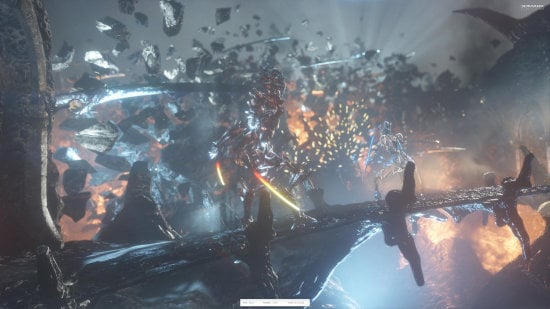
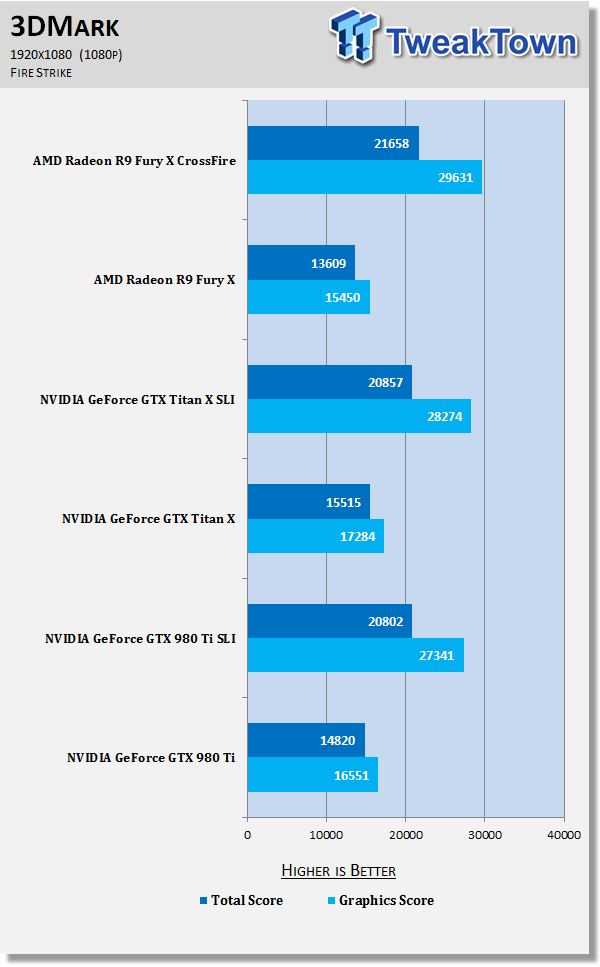
3DMark Fire Strike Extreme - 1440p
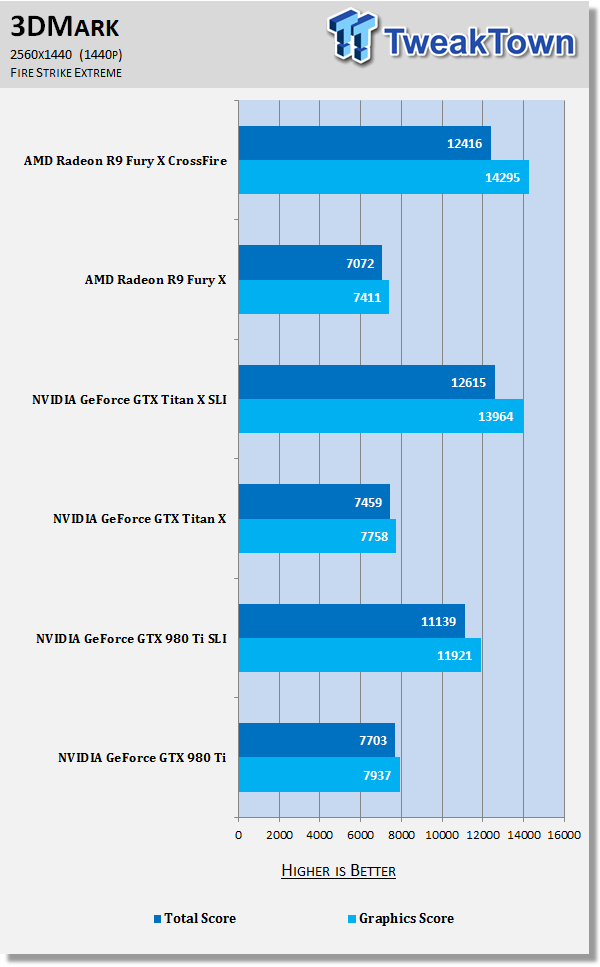
3DMark Fire Strike Ultra - 4K
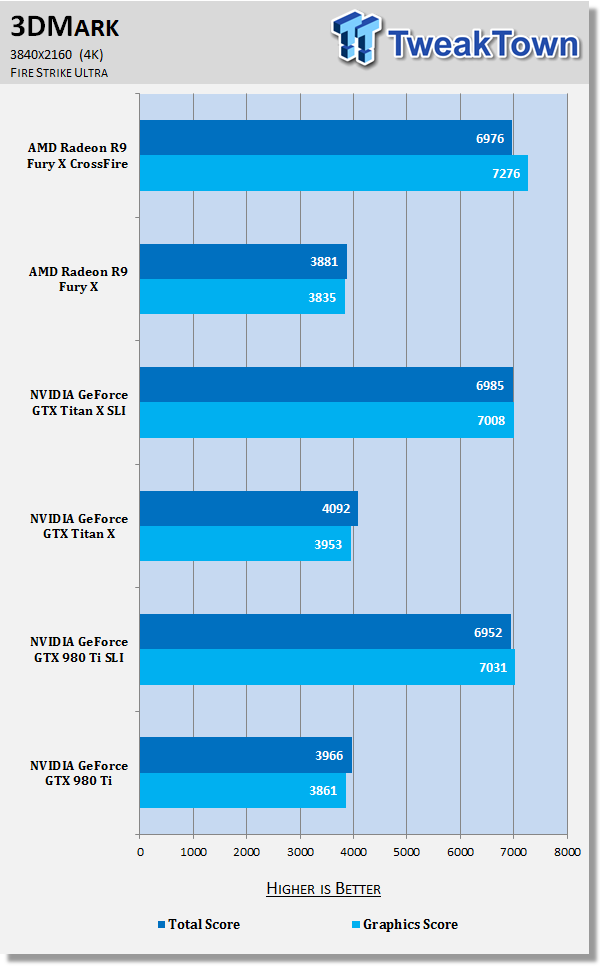
Heaven - 1080p
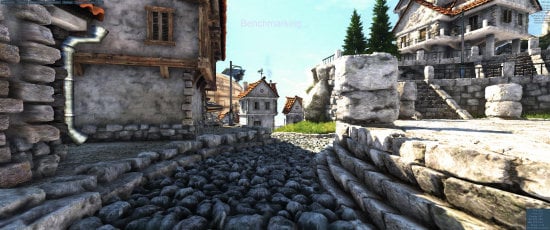
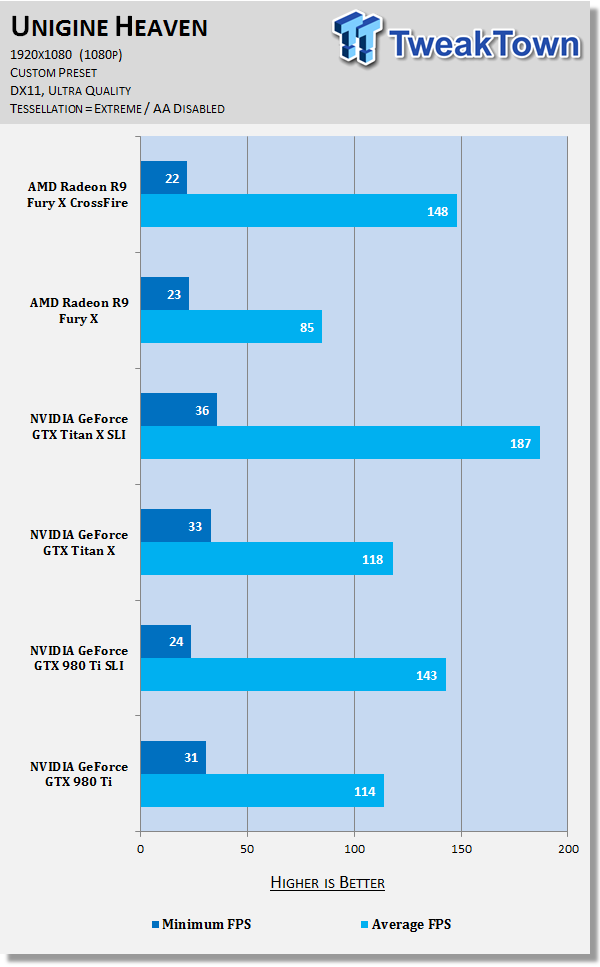
Heaven - 1440p
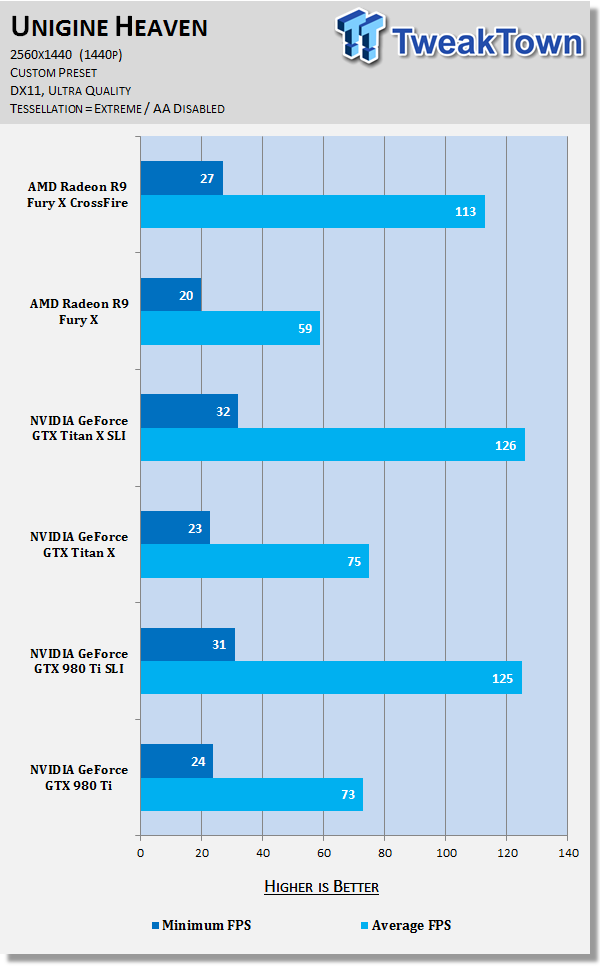
Heaven - 4K
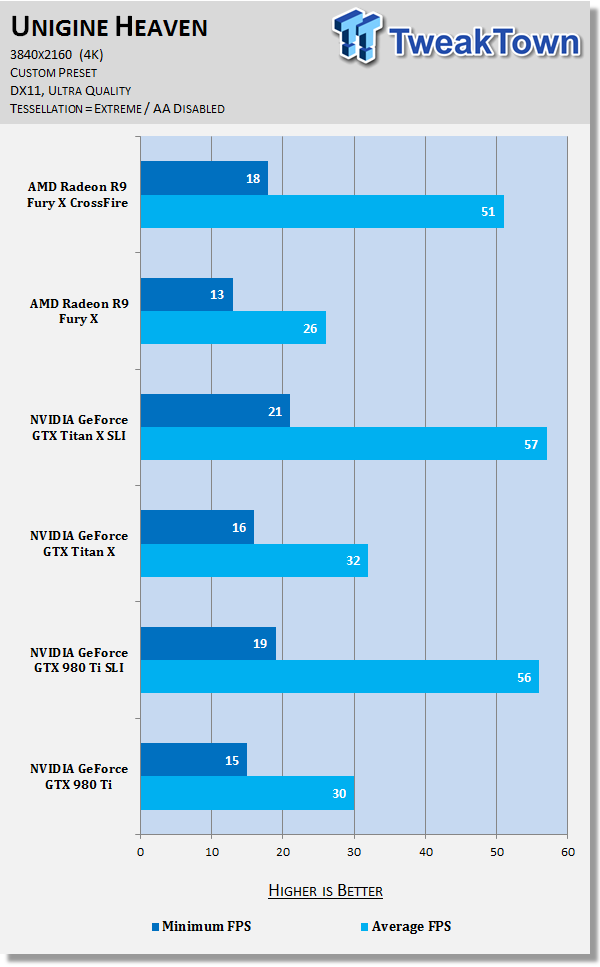
AMD smashes the ball out of the 3DMark park with the Fury X cards in CrossFire, where we can see perfect scaling at 1080p, 1440p and 4K. The AMD Radeon R9 Fury X CrossFire setup beats the NVIDIA GeForce GTX Titan X SLI and GTX 980 Ti SLI in 3DMark.
Heaven isn't so kind to AMD, with NVIDIA beating out the Fury X in every resolution - single, and multi-GPU. This isn't indicative of real-world performance, but it gives us a nice metric to look at and compare our cards. Plus it acts as a great look at power consumption, too.
Benchmarks - 1080p
Battlefield 4
This is one game that we did differently, as it does not feature a built-in benchmarking feature. When it comes to Battlefield 4, there are countless ways you can benchmark it. Some find a spot in the single player campaign which is easily repeatable, and use that. For our testing, we've chosen to use a 64-player online multiplayer server for real-time performance statistics.
We joined a 64-player map and played for five minutes using FRAPS, pulling our minimum/average and maximum FPS. We did this for each test, we run the game for 5 minutes at 1080p/1440p and 4K two times each. One time with Medium settings, and another with a custom Ultra preset (disabling AA). It's time consuming, but it gives us a perfect look into true real-world performance.
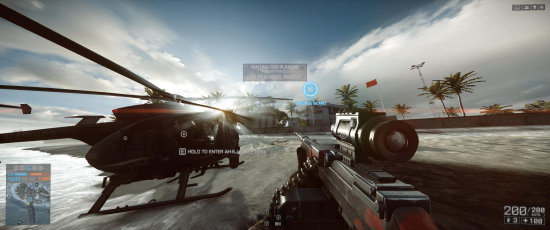
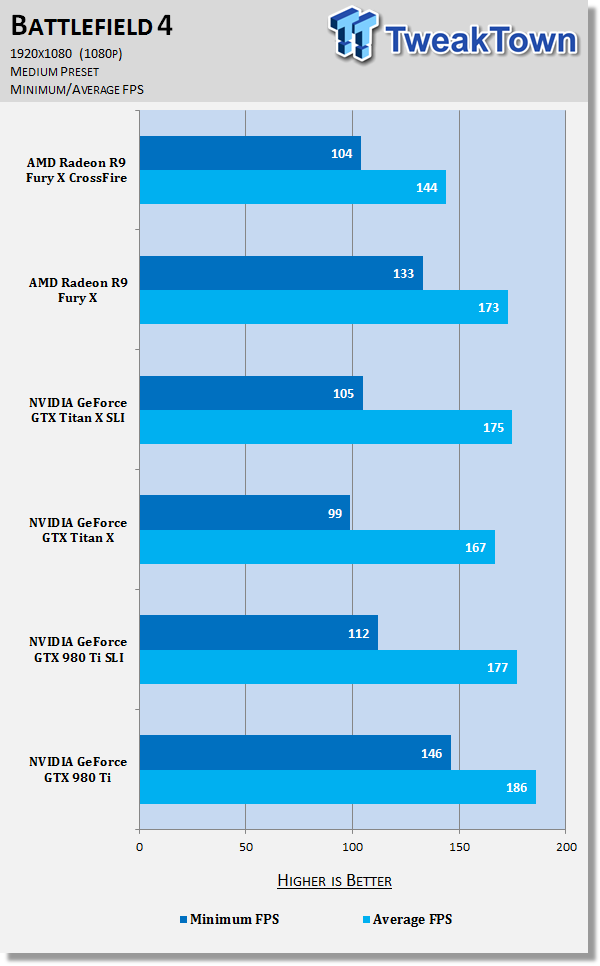
And again, this time with the Ultra preset.
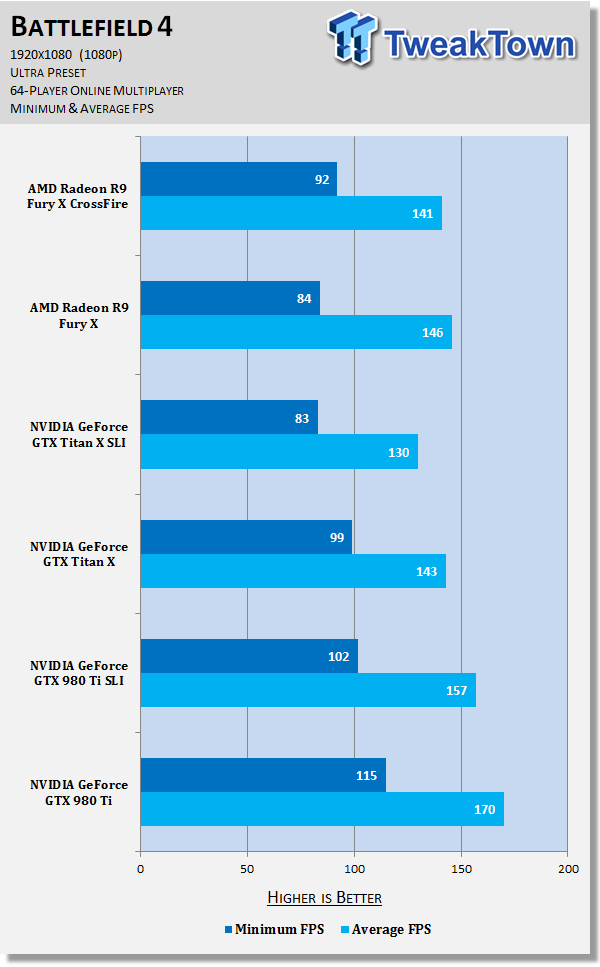
GRID Autosport
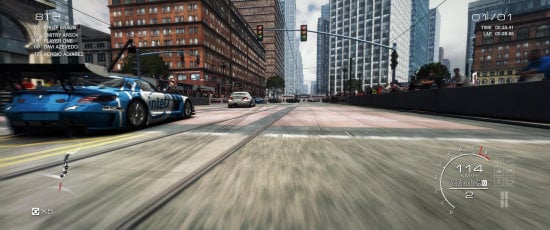
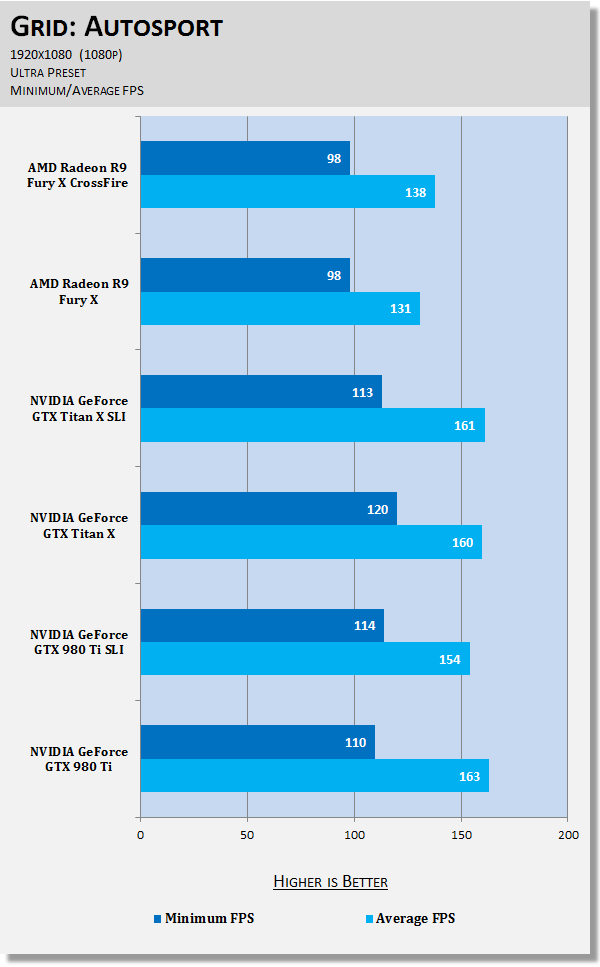
Metro: Last Light
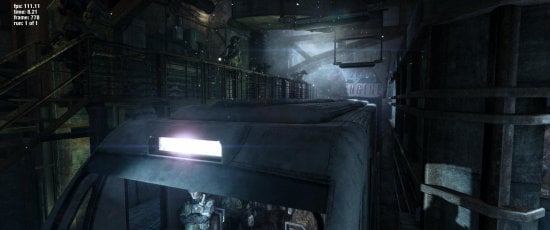
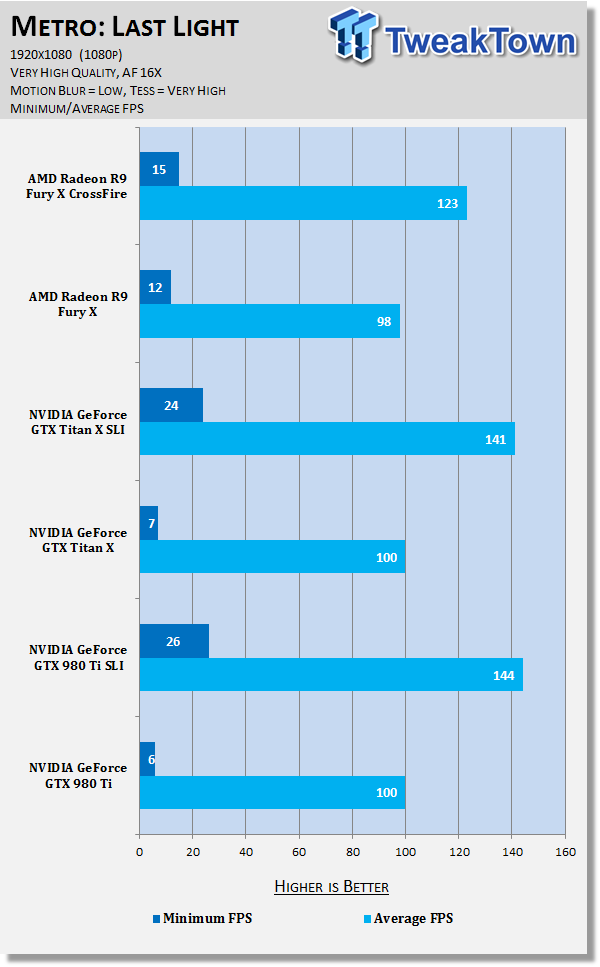
Middle-earth: Shadow of Mordor
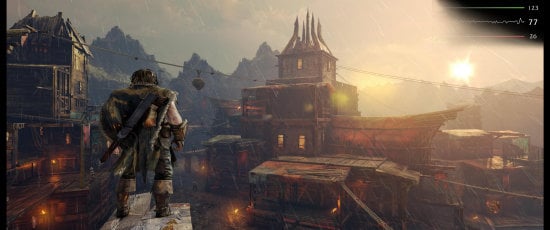
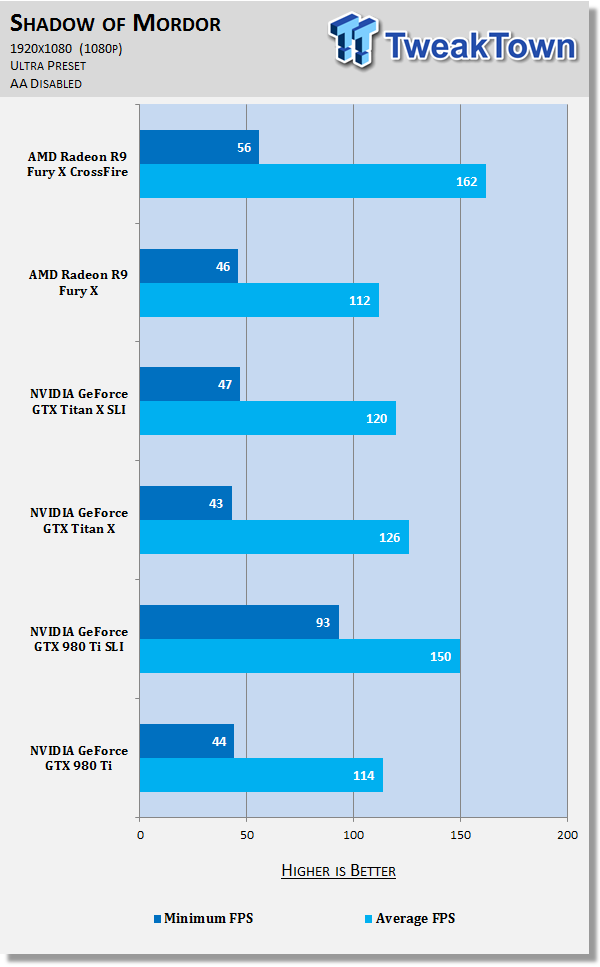
Thief
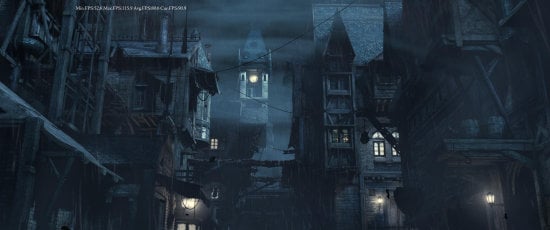
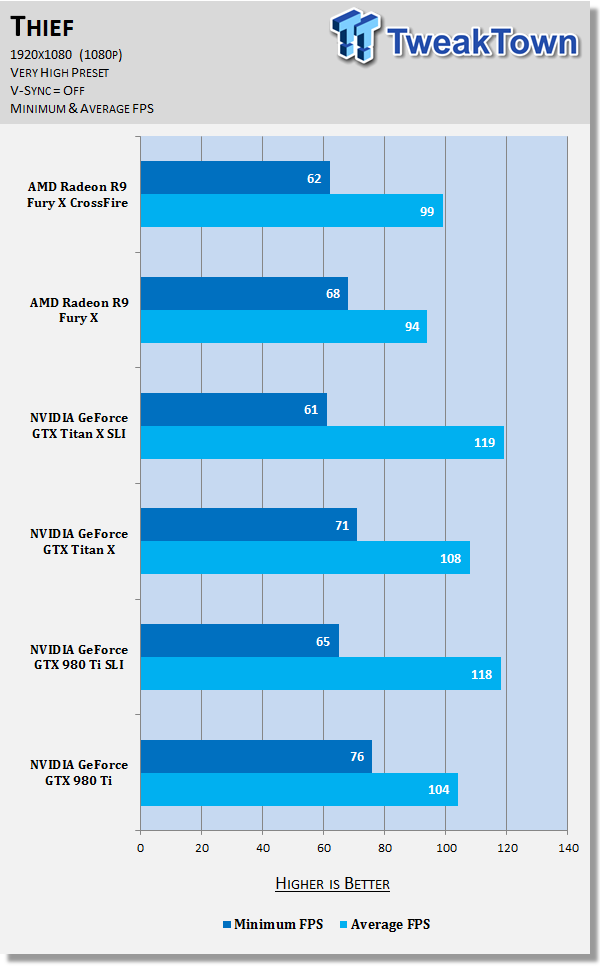
Tomb Raider

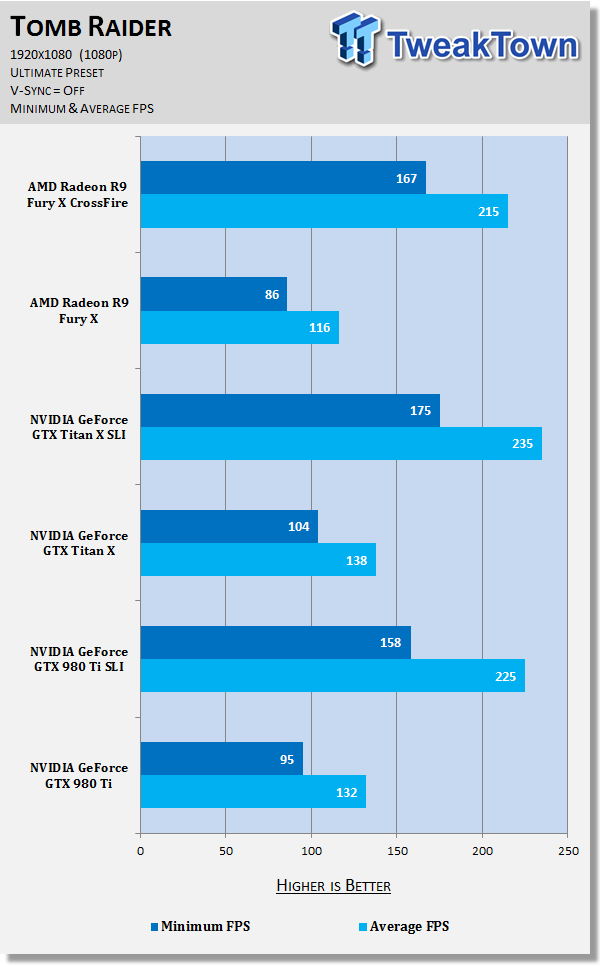
BioShock Infinite
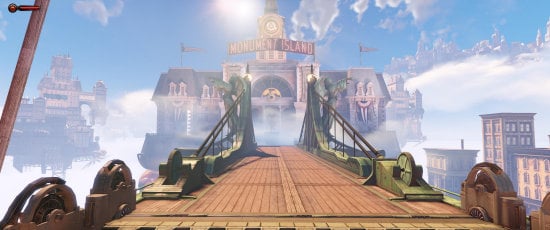
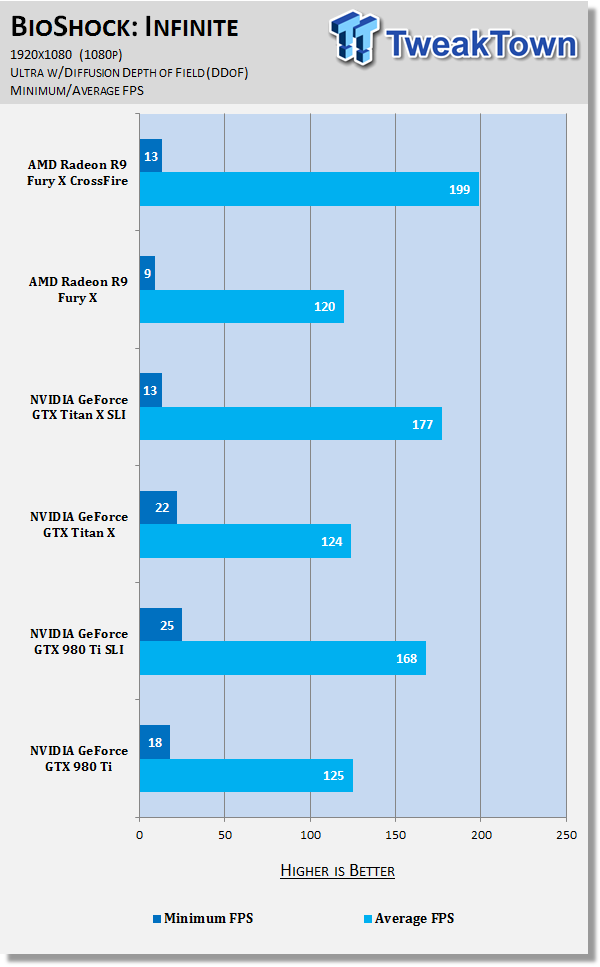
You can find our performance summary of all of our gaming tests later in the review.
Benchmarks - 1440p
Battlefield 4

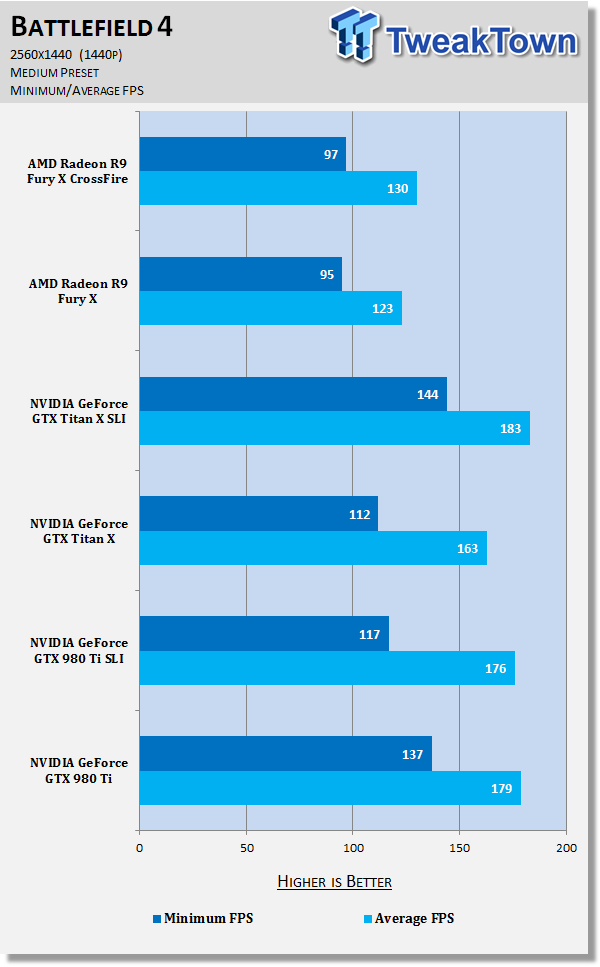
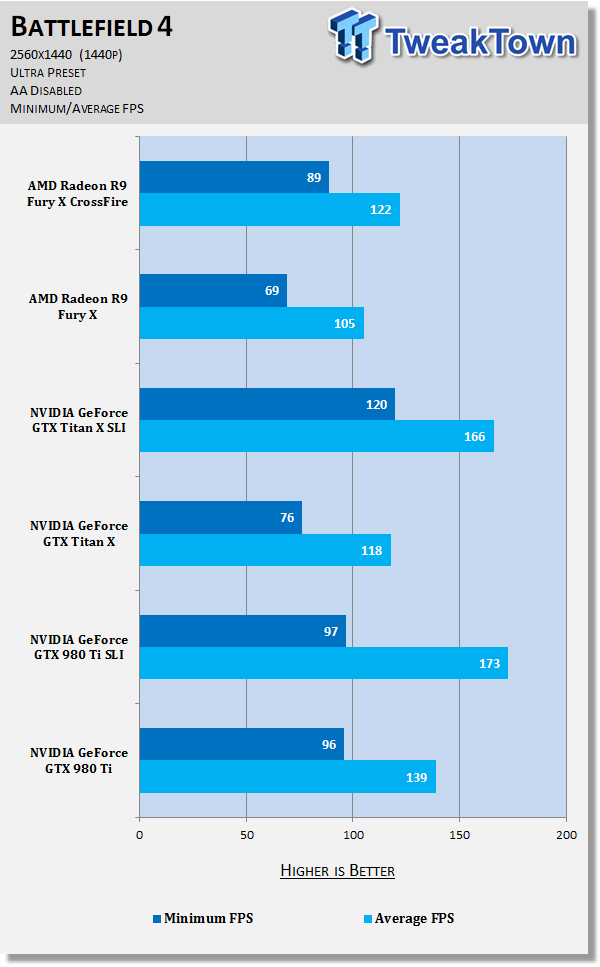
GRID Autosport

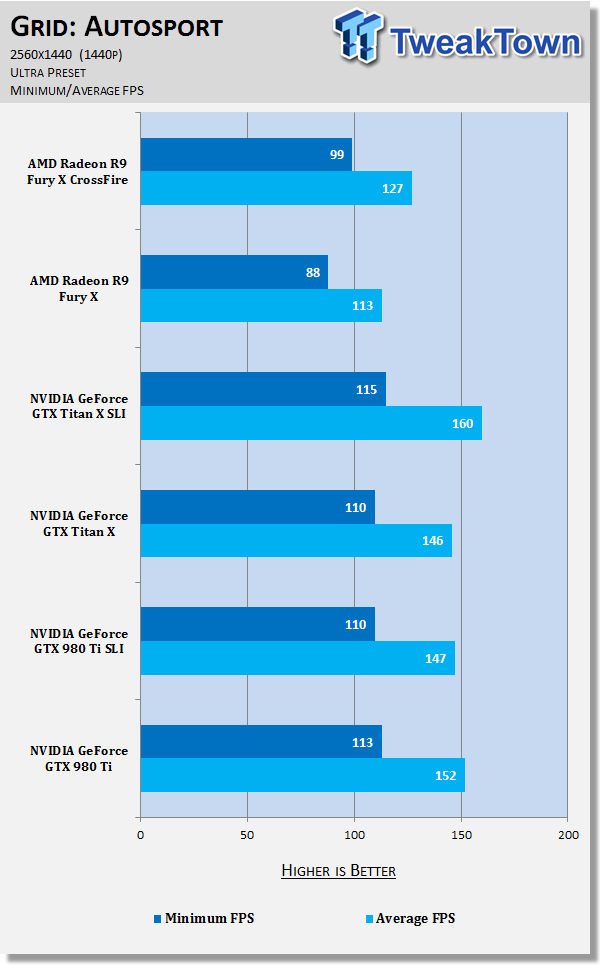
Metro: Last Light

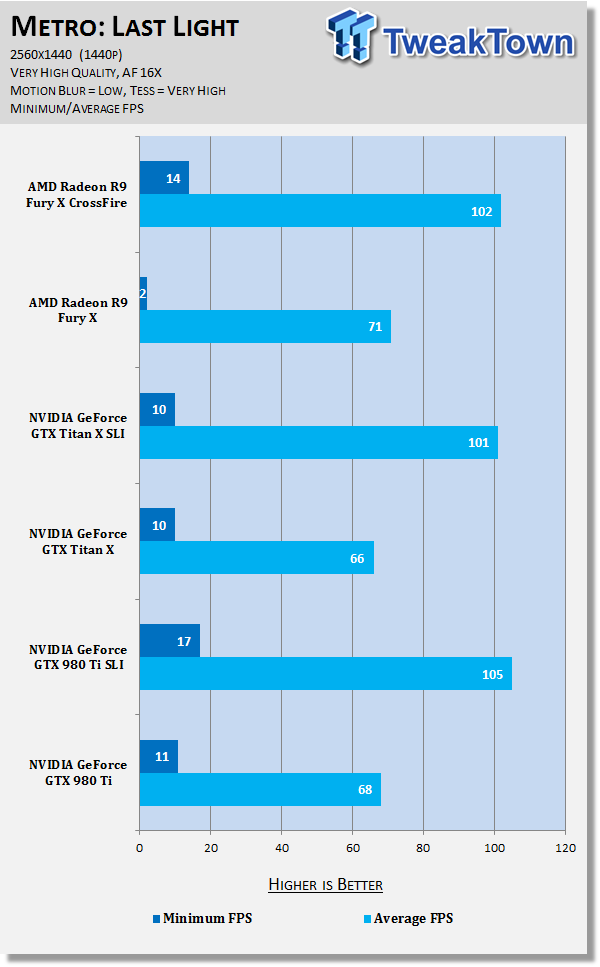
Middle-earth: Shadow of Mordor

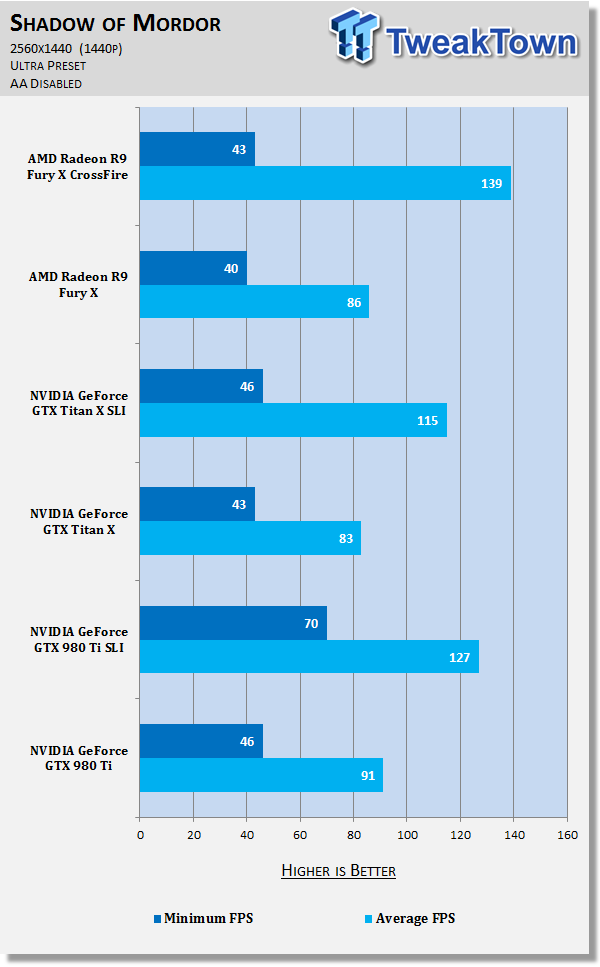
Thief

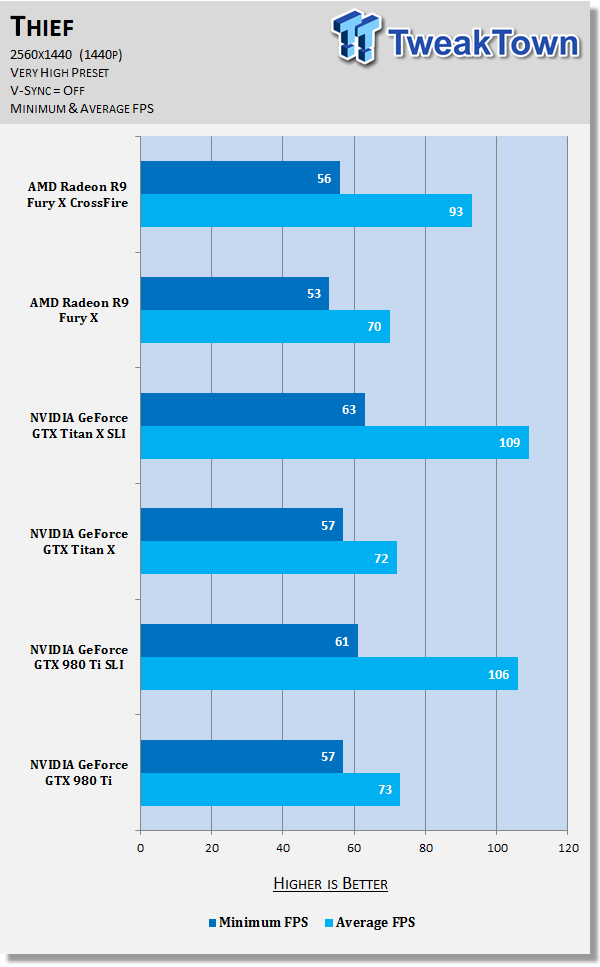
Tomb Raider

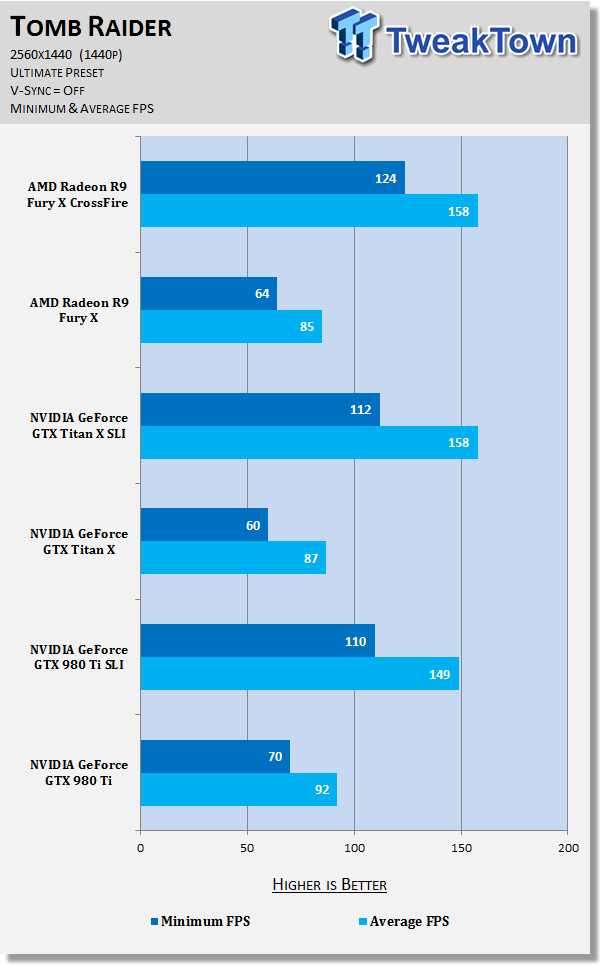
BioShock Infinite

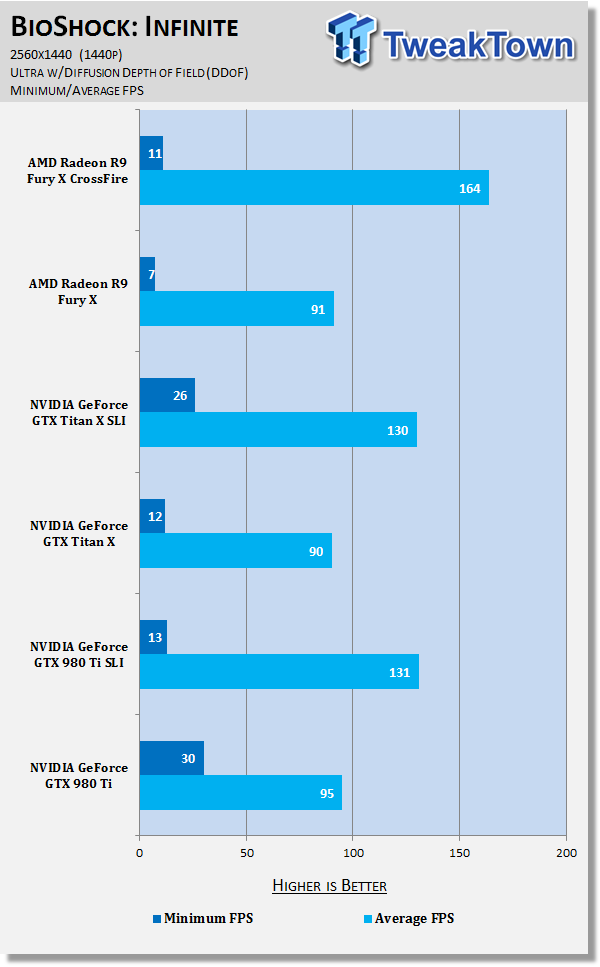
You can find our performance summary of all of our gaming tests later in the review.
Benchmarks - 4K
Battlefield 4

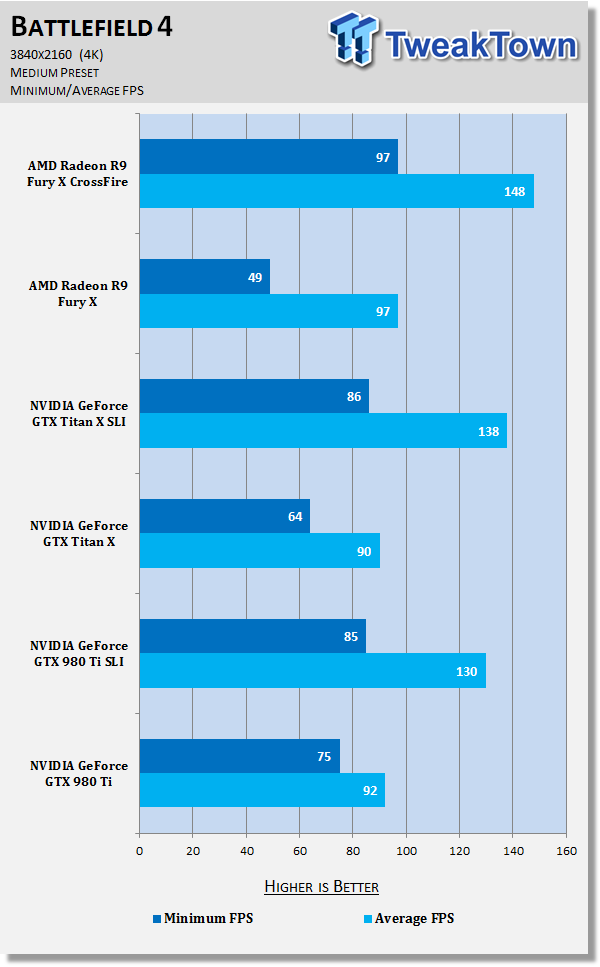
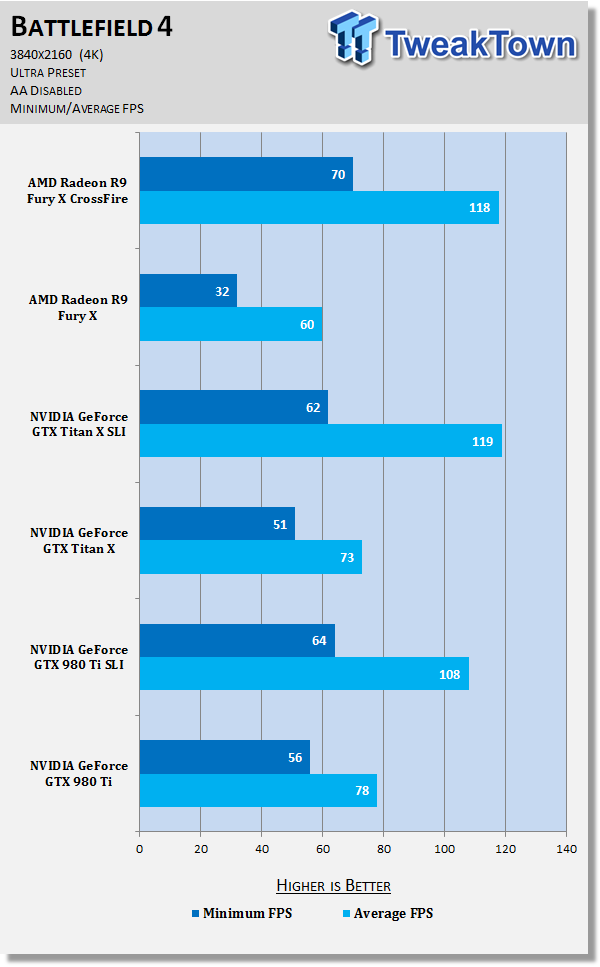
GRID Autosport

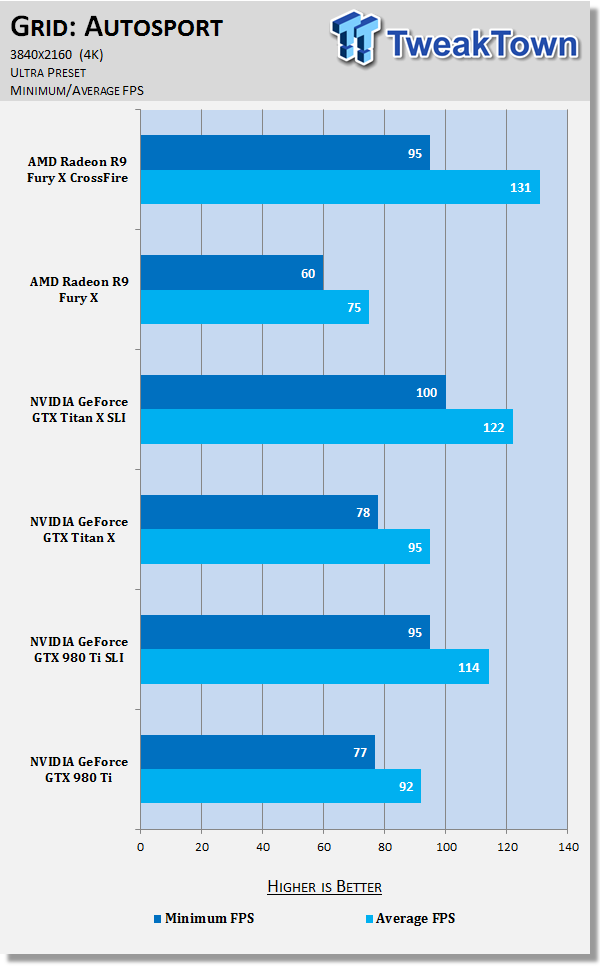
Metro: Last Light

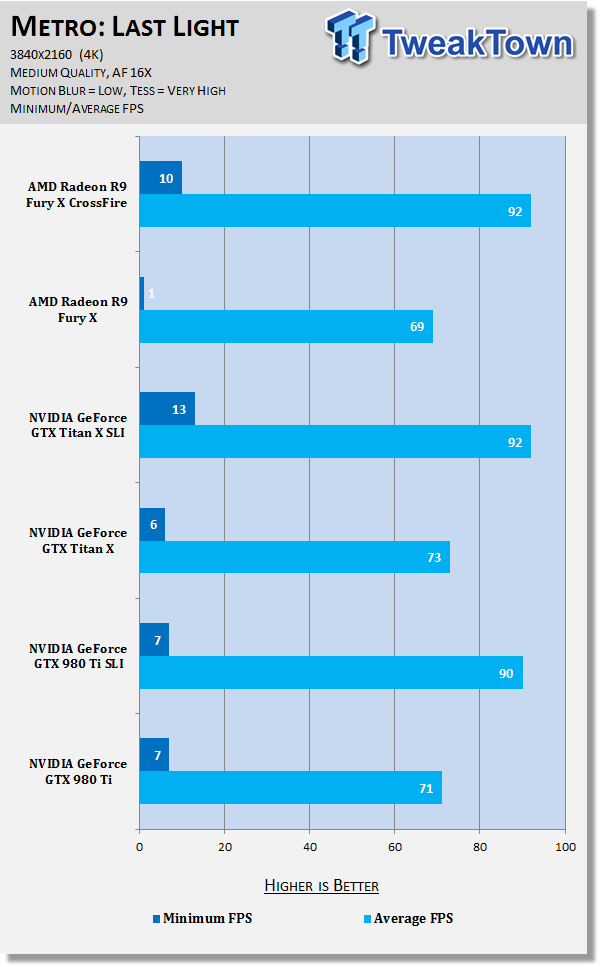
Middle-earth: Shadow of Mordor

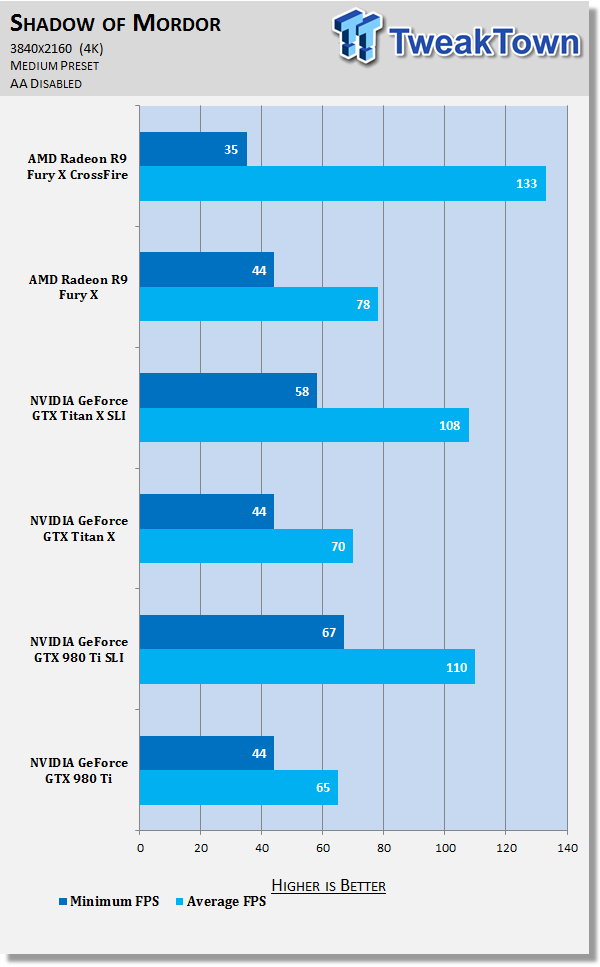
Thief

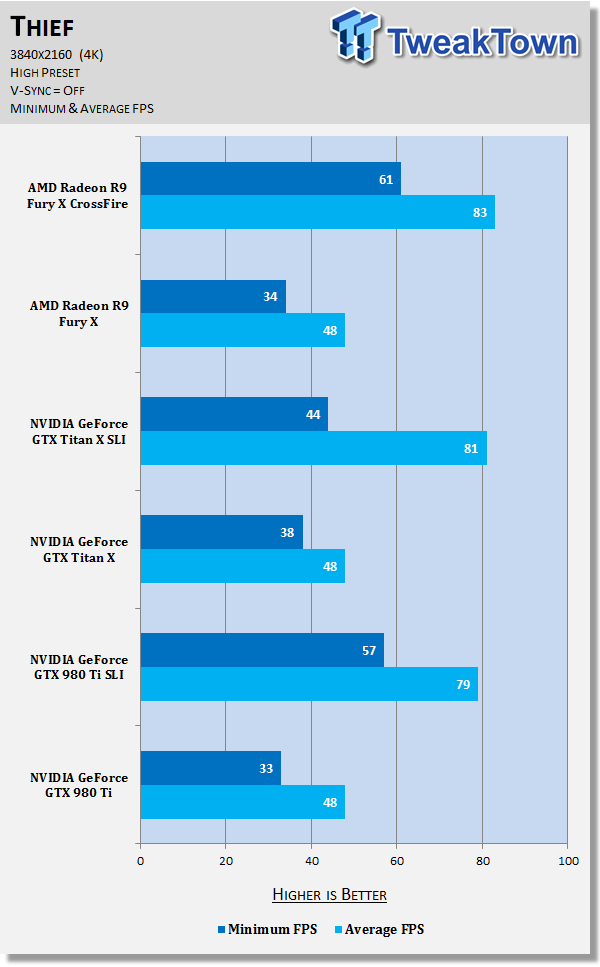
Tomb Raider

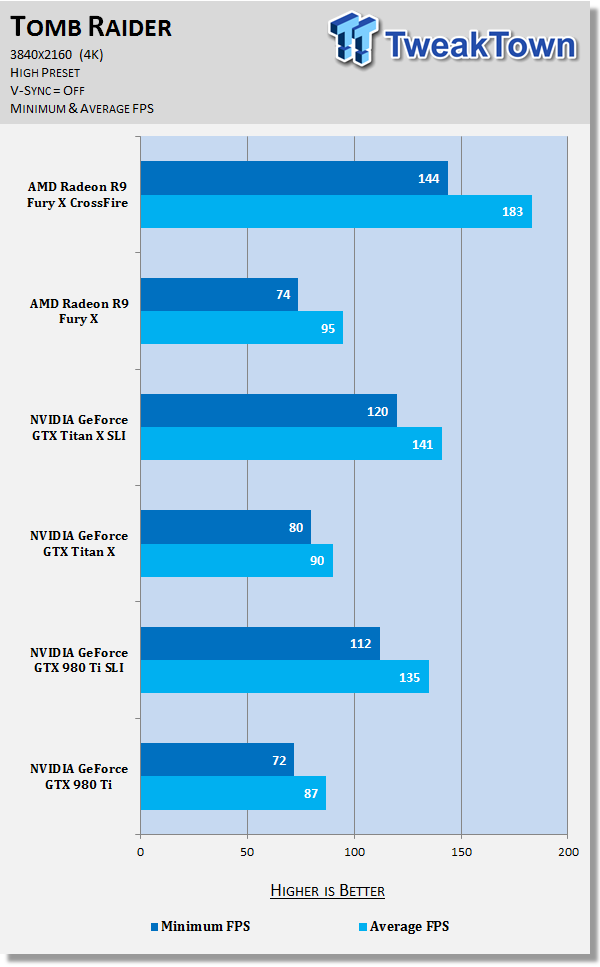
BioShock Infinite

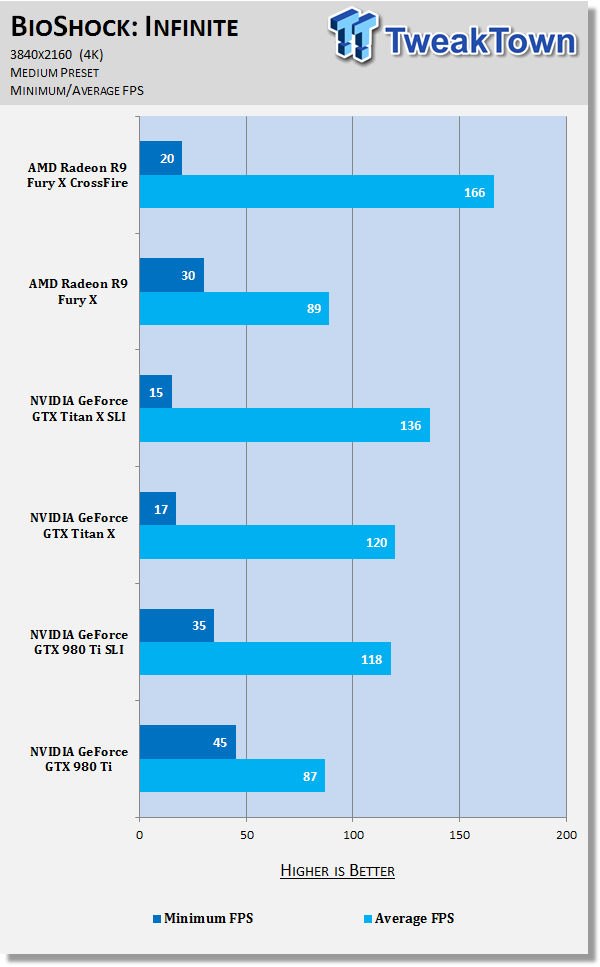
You can find our performance summary of all of our gaming tests later in the review.
Performance Summary
Much More Performance Than We Thought
Hell. I did not expect the Radeon R9 Fury X cards in CrossFire to scale this well with relatively early drivers. I was more than blown away as the resolution increases, and when we get to 4K, you're going to be quite excited by these results. I seriously cannot wait to get a third, and fourth card into my system for some serious testing on single monitor resolutions, and EyeFinity.
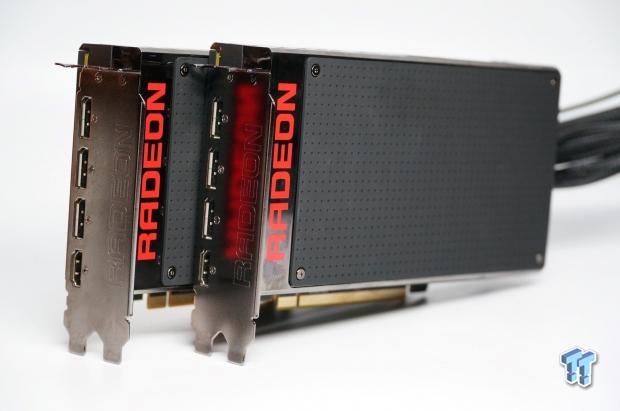
Performance at 1080p
Starting with Battlefield 4, the scaling of the two Fury X cards in CrossFire isn't good at all. But, you're not going to blow $1300+ on two video cards for 1080p, are you? Quickly wrapping up the 1080p performance, the second Fury X doesn't really offer much more performance in GRID: Autosport, but we see some nice gains in Metro: Last Light of around 25%.
Shadow of Mordor absolutely loves the wide memory bus on the Fury X, but with two of them in CrossFire, it loves it even more, with a huge 44% increase in performance, even at 1080p. Thief was barely faster in CrossFire, while Tomb Raider lapped up the second card with a huge 85% gain in performance at 1080p. BioShock: Infinite was also enjoying the second Fury X, with a 69% gain in performance.
Performance at 1440p
This is where AMD begins to really swing things around, but our real-world performance testing in Battlefield 4 doesn't seem to benefit from the second Fury X on the Medium preset, but we do have a slight yet welcome 16% increase in performance with the CrossFire setup.
There was only 12% more performance at 2560x1440 for GRID: Autosport, but a much bigger 44% performance increase from Metro: Last Light. Shadow of Mordor once again skyrocketed with the second Fury X card, with an additional 61% performance over the single HBM-based Fury X.
Thief was another game that performed well under the CrossFire configuration, with a 33% increase in performance while Tomb Raider was just out of this world with an 86% increase in performance. Lastly, BioShock: Infinite also impressed, with a huge 80% jump in performance over the single Fury X.
Performance at 4K
The second Fury X helps Battlefield 4 on the Medium preset at 4K, with a huge 52% increase in performance. But it was on the Ultra preset (minus AA) that had our jaws on the floor with a 97% increase in the average frame rate, with a huge 118FPS. Wow.
Whereas GRID: Autosport wasn't making use of the second Fury X at 1080p and 144p, at 4K we're experiencing a massive 75% increase in performance. Metro: Last Light doesn't enjoy the CrossFire setup as much as the other games at 4K, but we are still seeing a 33% increase in performance.
Yet again, Shadow of Mordor scales so incredibly well on the Fury X cards in CrossFire, where we have a 70% increase in performance at 4K. Thief sees a 73% increase in performance with the second Fury X card in our system, while Tomb Raider continues to impress with a huge 93% over the single HBM-based Radeon R9 Fury X. Lastly, BioShock: Infinite finishes off our impressive run at 4K with the Fury X cards in CrossFire with 86% more performance over the single Fury X.
Power Consumption
Even with the use of High Bandwidth Memory, the Radeon R9 Fury X isn't a power-saving video card by any means. One of them consumes around 375W of power, while a second will see the entire system scaling up to around 650W. Comparing this to Titan X SLI which consumes around 530W, or the GTX 980 Ti SLI which is closer to Fury X CF, with 615W.
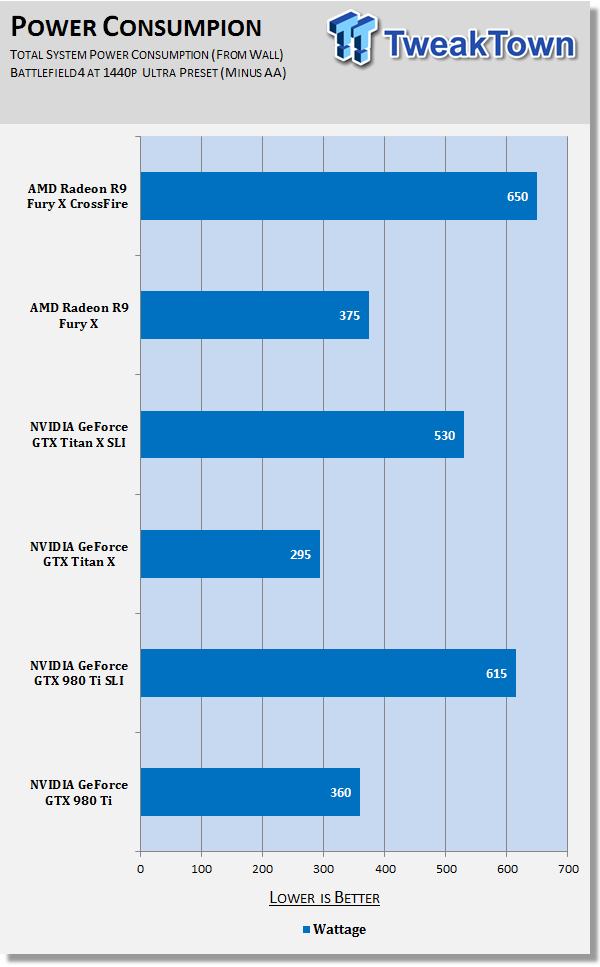
What's Hot, What's Not & Final Thoughts
This is where you can fast forward to the final section of the review, and get a quick recap and points on the two HBM-based AMD Radeon R9 Fury X cards in CrossFire.
What's Hot
Huge Performance: While the performance gains aren't as big in 1080p and 1440p, the gains that are to be had at 4K and beyond are nothing short of impressive. The two Fury X cards in CrossFire are able to not only compete with, but sometimes beat the best from NVIDIA.
Great CrossFire Scaling: In our synthetic benchmarking, we see the usual great scaling, but even with early drivers, we're seeing some impressive CrossFire scaling with the two GPUs in 1440p and 4K.
4GB Doesn't Feel So Limited: While High Bandwidth Memory doesn't offer any immediate performance benefits over GDDR5, the 4GB of HBM is definitely not a limiting factor when thrown into a CrossFire setup. We are going to test this more thoroughly with a couple of triple 4K EyeFinity articles very soon.
I Want To See More: Hey AMD... now that I've tested two Fury X cards in CrossFire, I'm beyond excited to see three and four of them in action. We need to make this happen.
What's Not
Power Consumption: While the power consumption peaks at 650W, most of the time it was sitting at around 580-600W. It's more than the GeForce GTX 980 Ti cards in SLI, but not by very much.
Fury X CrossFire Isn't Just Noisy, It's Hot, Too: One of the Fury X cards is annoying enough, but boy do two of them in CrossFire make the room warm, and slightly louder. The radiators get quite warm, to the point of heating up my entire office.
Two Radiators = 10X Hassle: There's no easy way of installing the two radiators into a system without any troubles. I simply do not like the fact that AMD needs to use a radiator on its new Fury X, as it completely changes the way you're building or setting up your PC. You can't just install these things and forget it, you have to plan for it, and buy a chassis accordingly.
Final Thoughts
I have to admit it: I'm blown away. The single AMD Radeon R9 Fury X didn't really impress me, but two of them in CrossFire are an absolute powerhouse of technology. Once you get to 4K, the second HBM-based card really has your gaming experience kicking into second gear and scaling incredibly well with most of the games in our benchmarking lineup.
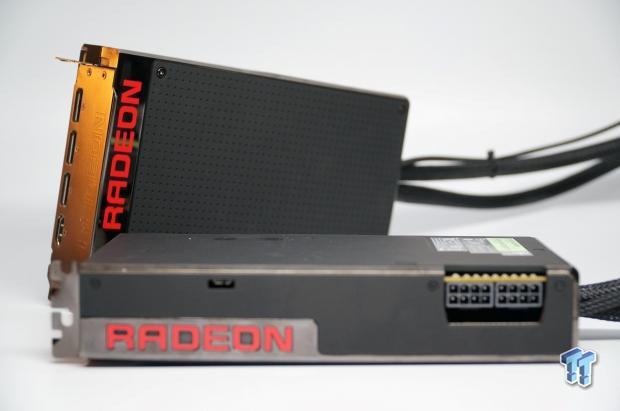
I didn't think that we'd see this type of performance, with all of our games playable at 4K with over 100FPS average, except for Metro: Last Light. Battlefield 4 at 4K at 118FPS average is just amazing... something that the GTX Titan X offers, for $2000 compared to around $1300.
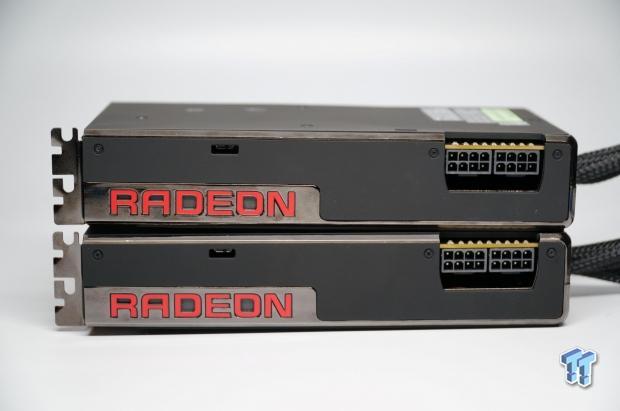
The two radiators are annoying beyond words, there's just nothing I can type into an article that expresses my displeasure of the two huge radiators. Sure, AMD has cool operating cards with the Fury X, with around 50-55C under stress, while the upcoming Fury (which will be air-cooled) will run at around 70-75C depending on the card.
This means that the Fiji GPU is getting damn hot, and it simply needs water cooling to even compete with NVIDIA's offerings like the GeForce GTX 980 Ti and Titan X which are both air-cooled. This brings us down to the wire: if you're building a new PC, even if the Fury X or Fury X CrossFire beats the GTX 980 Ti, I would still recommend an SLI build of the GTX 980 Ti cards.
You can throw them into your system without the need of two huge spots for watercooling, and there are now plenty of third-party cards to choose from with great overclocks and cooling technology slapped onto them. This doesn't take away from the fact that AMD fans can rest assured that Fury X in CrossFire kicks some serious NVIDIA ass. Way to go, AMD.


 United
States: Find other tech and computer products like this
over at
United
States: Find other tech and computer products like this
over at  United
Kingdom: Find other tech and computer products like this
over at
United
Kingdom: Find other tech and computer products like this
over at  Australia:
Find other tech and computer products like this over at
Australia:
Find other tech and computer products like this over at  Canada:
Find other tech and computer products like this over at
Canada:
Find other tech and computer products like this over at  Deutschland:
Finde andere Technik- und Computerprodukte wie dieses auf
Deutschland:
Finde andere Technik- und Computerprodukte wie dieses auf